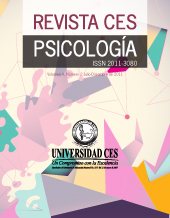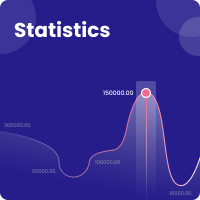Changes in Cognitive Performance in a Sample of Children and Teens with Post-Traumatic Stress Disorder Resulting from the Armed Conflict in Colombia
DOI:
https://doi.org/10.21615/cesp.10.2.4Keywords:
Post-Traumatic Stress Disorder, PTSD, Neuropsychological Assessment, Attention, Memory, Executive Function, Cognitive AbilityAbstract
The aim of this study was to compare the cognitive functioning profile between a sample of children and adolescences with Post-Traumatic Stress Disorder (PTSD) derived from the arm conflict in Colombia and a control group. This study compared neuropsychological test results from a group of 50 children, 25 of them victims of an associated armed conflict situation with PTSD and 25 from the same geographical zone, without a record of going through such situation. The groups were matched by age, sex, socioeconomic status and education level. A battery of tests that assessed attention, memory and executive function was conducted. The results indicate that children with PTSD evidence a neuropsychological profile characterized by difficulties in the processes of visual attention in relation to verbal and nonverbal materials, logical memory disorders, with ability to perform verbal learning activities and notorious incidence in executive functioning. Assessment indicates changes that imply inhibitory control, poor ability to monitor the behavior, and difficulties in task that involve cognitive flexibility. Based on these scores, it is proposed a profile of cognitive functioning in children and adolescents with PTSD that could be useful to conduct more accurate assessment and clinical interventions within the framework of the Colombian post conflict process.
Downloads
References
Agudelo, G. D. (2017). Un balance de los estudios sobre la paz negociada en Colombia. Estudios Políticos, (50), 203-215.
American Psychiatric Association. (1994). DSM-IV. Diagnostic and statistical manual of mental disorders. American Psychiatric Press: Washington, DC.
American Psychiatric Association. (2002). DSM-IV-TR. Diagnostic and statistical manual of mental disorders. American Psychiatric Press: Washington, DC. Masson: Barcelona.
American Psychiatric Association. (2013). DSM-5. Diagnostic and statistical manual of mental disorders (5th Edition). Washington, DC: Author.
Aupperle, R. L., Melrose, A. J., Stein, M. B., & Paulus, M. P. (2012). Executive function and PTSD: Disengaging from trauma. Neuropharmacology, 62(2), 686–694.
Barrera, M., Calderón, L., & Bell, V. (2013). The Cognitive Impact of Sexual Abuse and PTSD in Children: A Neuropsychological Study. Journal of child sexual abuse, 22(6), 625-638.
Bremner, J. D. (2006). The relationship between cognitive and brain changes in posttraumatic stress disorder. Annals of the New York Academy of Sciences, 1071(1), 80-86.
Bruce, S.E., Buchhoz, K.R., Brown, W.J., Yan, L., Burbin, A., & Sheline, Y.I. (2013). Altered emotional interference processing in the amígdala and insula in women with Post-Traumatic Stress Disorder. NeuroImage: Clinical 2, 43-49.
Children´s Bureau. (2012). Child Maltreatment 2012. Autor. Washington D.C.
Danzi, B., & La-Greca, A. (2016). DSM-IV, DSM-5, and ICD-11: Identifying children with posttraumatic stress disorder after disasters. Journal of Child Psychology and Psychiatric, 57, 1444-1452. Retrieved from http://onlinelibrary.wiley.com/doi/10.1111/jcpp.12631/full
De Bellis, M.D., Hooper, S.R., Spratt, E.G., & Woolley, D.P. (2009). Neuropsychological findings in childhood neglect and their relationships to pediatric PTSD. Journal of the International Neuropsychological Society, 15, 868–878.
Diamond, A. (2002). Normal development of prefrontal cortex from birth to young adulthood: Cognitive functions, anatomy, and biochemistry. Principles of frontal lobe function, 466-503.
Falconer, E., Bryant, R., Felmingham, K. L., Kemp, A. H., Gordon, E., Peduto, A., & Olivieri, G. (2008). The neural networks of inhibitory control in posttraumatic stress disorder. Journal of Psychiatry & Neuroscience: JPN, 33(5), 413-22. Retrieved from http://www.pubmedcentral.nih.gov/articlerender.fcgi?artid=2527717&tool=pmcentrez&rendertype=abstract
Golden, C. (2005). STROOP: Test de colores y palabras: Manual. Madrid: TEA.
Hair, N. L., Hanson, J. L., Wolfe, B. L., & Pollak, S. D. (2015). Association of child poverty, brain development, and academic achievement. JAMA pediatrics, 169(9), 822-829.
Heaton R. K., Chelune, G. J., Talley, J. L., Kay, G. G., & Curtis, G. (2001). Test de clasificación de tarjetas de Wisconsin WCST. Madrid: TEA.
Hernández, R., Fernández, C., & Baptista, P. (2003). Metodología de la Investigación (3 ed). Mexico: Mc Graw Hill.
Herrera, J.A., & Castellanos, C. E. (2008). Interpretación Neuropsicológica del Test de Colores y Palabras de Stroop. Monografías de Evaluación Neuropsicológica. Coral Gables: Interamerican Academy of Applied Cognitive Neuroscience.
Instituto Nacional de Medicina Legal y Ciencias Forenses. (2013). FORENSIS: Datos para la Vida. Bogotá: Autor.
Jackowski, A. P., Douglas-Palumberi, H., Jackowski, M., Win, L., Schultz, R. T., Staib, L. W., ... Kaufman, J. (2008). Corpus callosum in maltreated children with posttraumatic stress disorder: a diffusion tensor imaging study. Psychiatry Research: Neuroimaging, 162(3), 256-261.
Kadak, M.T., Nasroglu, S., & Aydin, A. (2013). Prevalance of PTSD, depression and anxiety symptoms among adolescents 6 months after vanerciş earthquake 2011. European Psychiatry (28), Suppl. 1, http://dx.doi.org/10.1016/S0924-9338(13)76657-4
Kupfer, D., Kuhl, E. & Regier, D.A. (2013). DSM-5: The future arrived. JAMA (309), 16, 1691-1692. http://jama.jamanetwork.com/ by a Mayo Clinic Library User on 04/23/2013.
Lecrubier, Y., & DMINI, S. (2003). 5.0. 0 Versión En: Galli E, Saavedra J (Traductores). MINI 5.0. 0 Versión en Español. CIE-10/PERU. Lima, Perú.
LeDoux, J., (2003). The emotional brain, fear, and the amygdala. Cell Mol. Neurobiology, 23, 727–738.
LeDoux, J. E. (2014). Coming to terms with fear. Proceedings of the National Academy of Sciences, 111(8), 2871-2878.
Lei, D., Li, K., Li, L., Chen, F., Huang, X., Lui, S., ... Gong, Q. (2015). Disrupted functional brain connectome in patients with posttraumatic stress disorder. Radiology, 276(3), 818-827.
Lezak, M.D., Howieson, D. B., & Loring, D. W. (2004). Neuropsychological Assessment (4th ed.). New York: Oxford Press.
Matute, E., Rosselli, M., Ardila, A., & Ostrosky-Solís, F. (2007). Evaluación neuropsicológica infantil. México: Manual Moderno.
Molina Valencia, N. (2017). Retos de la psicología en la construcción de paz en Colombia:¿ fatalismo o ingenuidad?. Pensamiento Psicológico, 15(1), 115-126.
Moscovitch, M., & Winocur, G. (2002). The frontal cortex and working with memory. In: Principles of frontal lobe function. (Stuss DT, Knight R, eds), pp 188 –209. New York: Oxford UP.
National Child Abuse and Neglect Data System. (2010). Child maltreatment. US Department of Health and Human services: Washington DC.
Navalta, C. P., Polcari, A., Webster, D. M., Boghossian, A., & Teicher, M. H. (2006). Effects of childhood sexual abuse on neuropsychological and cognitive function in college women. The Journal of Neuropsychiatry and Clinical Neurosciences, 18(1), 45-53. doi: 10.1176/appi.neuropsych.18.1.45
Ospina, J., Barrera, M., Ramírez, A., & Ceballos, P. (2010). Manual de intervención psicosocial para víctimas de minas antipersonal y municiones sin explotar en Colombia. Medellín: Universidad de Antioquia.
Peng, C. Y. J., Chen, L. T., Chiang, H. M., & Chiang, Y. C. (2013). The impact of APA and AERA guidelines on effect size reporting. Educational Psychology Review, 157-209.
Petrides, M., & Pandya, D. N. (2002). Comparative cytoarchitectonic analysis of the human and the macaque ventrolateral prefrontal cortex and corticocortical connection patterns in the monkey. European Journal of Neuroscience, 16(2), 291-310.
Reynolds, C.R., & Kamphaus, R.W. (2009). RIAS. Escala de Inteligencia de Reynolds. España: TEA Ediciones.
Richards, A., Ospina-Duque, J., Barrera-Valencia, M., Escobar-Rincón, J., Ardila-Gutiérrez, M., Metzler, T., & Marmar, C. (2011). Posttraumatic stress disorder, Anxiety and Depression symptoms, and psychosocial treatment needs in Colombians internally displaced by armed conflict: A mixed-method evaluation. Psychological Trauma: Theory, Research, Practice, and Policy. doi: 10.1037/a0022257
Sege, R. D., Amaya-Jackson, L., & American Academy of Pediatrics, Committee on Child Abuse and Neglect. (2017). Clinical considerations related to the behavioral manifestations of child maltreatment. Pediatrics, 139(4), e20170100.
Shin, L. M., Rauch, S. L., & Pitman, R. K. (2006). Amygdala, medial prefrontal cortex, and hippocampal function in TEPT. Annals of the New York Academy of Sciences, 1071, 67-79. doi:10.1196/annals.1364.007
Stuss, D. T., & Knight, R. T. (2013). Principles of frontal lobe function. Oxford University Press.
Tórres, Y., & Posada, J. (2010). Estado del arte sobre la salud mental del adolescente. En Y. Torres (Ed.), Situación de salud mental del adolescente. Estudio de salud mental Colombia (pp. 139–153). Medellín: Serie editorial CES.
Unidad para la Atención y Reparación Integral a las Víctimas (UARIV). (2014). Reporte General sobre Víctimas. Recuperado de en http://rni.unidadvictimas.gov.co/?q=v-reportes
Vasterling, J. J., Duke, L. M., Brailey, K., Constans, J. I., Allain, A. N., & Sutker, P. B. (2002). Attention, learning, and memory performances and intellectual resources in Vietnam veterans: TEPT and no disorder comparisons. Neuropsychology, 16(1), 5-14. doi:10.1037//0894-4105.16.1.5
Weber, D., & Reynolds, C. R. (2004). Clinical perspectives on neurobiological effects of psychological trauma. Neuropsychology Review, 14(2), 115-29. Retrieved from http://www.ncbi.nlm.nih.gov/pubmed/15264712
Wechsler, D. (1994). Test de inteligencia para niños. WISC-III Manual. Test de inteligencia para niños WISC-III: manual.
Wilson, R., Barnes, L., & Bennett, D. (2003). Assessment of lifetime participation in cognitively stimulating activities. Journal of clinical an experimental Neuropsychology, 25(5), 634-642.
Yehuda, R. (2002). Post- traumatic stress disorder. New England Journal of Medicine, 346 (2), 108-116.
Zhang, B., & Zhang, Y. (2009). MannWhitney U test and Kruskal Wallis test should be used for comparisons of differences in medians, not means: Comment on the article by van der Helm van Mil et al. Arthritis & Rheumatism, 60(5), 1565-1565.
Downloads
Published
How to Cite
Issue
Section
License
Copyright (c) 2017 Mauricio Barrera Valencia, Liliana Calderón - Delgado, Daniel Camilo Aguirre-Acevedo

This work is licensed under a Creative Commons Attribution-NonCommercial-ShareAlike 4.0 International License.
Each manuscript is accompanied by a statement specifyingThat the materials are unpublished, that have not been previously published in printed formatElectronic and that they will not be presented to any other means before knowing the decision of the magazine. ThroughoutIn case, any previous publication, sea in printed or electronic form, must be made known to the editorial staffWriting The authors attach a signed statement stating that, and the manuscript is acceptedFor publication, the rights of reproduction are the exclusive property of the Journal CES Psychology.| Article metrics | |
|---|---|
| Abstract views | |
| Galley vies | |
| PDF Views | |
| HTML views | |
| Other views | |




